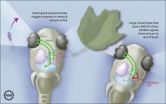(Press-News.org) Honesty pays off, according to a new study of job seekers. When job applicants were warned that a pre-employment test could detect fake responses, they gave more honest answers -- a result that could improve their chances of being hired. Results were published in the human resources journal Applied HRM Research.
"People may be tempted to make themselves look as attractive as possible to employers, but honesty is always the best policy, since many pre-employment tests have ways to spot fakers," said Chris Wright, associate professor of psychology at San Francisco State University. "We found that applicants who were warned against faking achieved significantly lower test scores, suggesting that they gave more honest answers and hadn't exaggerated their responses in order to inflate their test results."
The study also found that job applicants who were warned against faking were more likely to be rated as "honest" by the test's lie detection feature. The findings suggest that a simple warning may curb dishonest responses.
The study focused on tests that collect biographical data about applicants' education, employment experience, skills and attitudes. Employers are increasingly using such pre-employment assessment tools as part of the hiring process, particularly for retail jobs and service sector positions.
Many tests have built-in faking scales that rely on specially-designed questions to detect faking. For example, applicants might be asked to rate their agreement with unrealistic statements, such as "I have never lied," or may be asked the same question in different ways to check the consistency of their answers.
Conducted in a real recruitment setting, the study included 200 participants who were applying for bus operator jobs with a municipal transit agency. Applicants completed a test assessing their attitudes and behaviors related to attendance, safety and customer service. Before the test, half of the applicants received verbal and written warnings, explaining that misrepresenting themselves would be detected by the test and that information about their honesty would be used in hiring decisions. The remaining candidates took the test without being warned.
"Our findings suggest that some people do embellish their answers on pre-employment tests," Wright said. "However, we also found that warning applicants can be a simple and cost-effective way for employers to influence people to provide honest responses, which will ultimately provide more accurate test results to inform hiring decisions."
INFORMATION:
"The effect of warning against faking on noncognitive test outcomes: a field study of bus operator applicants" was published in the Winter 2010 issue of the human resources journal Applied HRM Research. The paper is available online at: http://www.xavier.edu/appliedhrmresearch/2010-Winter.html
Wright co-authored the paper with Joni Kuroyama, a former graduate student at SF State, Todd M. Manson of Indiana University Southeast and Chris J. Sablynski of University of the Pacific.
In the job hunt, people do lie, but honesty pays off, study finds
2010-11-02
ELSE PRESS RELEASES FROM THIS DATE:
The zebrafish's neural circuit prevents it from biting off more than it can chew
2010-11-02
Between alerting us to danger and allowing us to spot prey, vision keeps many animals, including humans, alive. But exactly how does this important sense work, and why is it easier for us to spot movement of small objects in our field of vision, than to notice other things? The complexity of the neural network that supports vision has long baffled scientists.
Now, with a new technology and support from the National Science Foundation, Claire Wyart in Ehud Isacoff's lab at the University of California at Berkeley and Filo Del Bene at Herwig Baier's lab at the University ...
New data from Phase 3 studies showed superior SVR (viral cure) rates achieved with telaprevir-based combination therapy in people with hepatitis C, regardless of race or stage of liver disease
2010-11-02
Boston, MA, October 30, 2010 – Vertex Pharmaceuticals Incorporated (Nasdaq: VRTX) today announced new data from its Phase 3 studies of people with genotype 1 chronic hepatitis C who have not been treated previously. In these studies, the majority of people achieved superior sustained viral response (SVR or viral cure) rates with a telaprevir-based combination regimen, compared to current therapies, regardless of race/ethnicity or stage of liver fibrosis (factors known to limit response to current hepatitis C treatments). Patients in the ADVANCE and ILLUMINATE studies were ...
Study improves accuracy of models for predicting ozone levels in urban areas
2010-11-02
A team of scientists has, for the first time, completely characterized an important chemical reaction that is critical to the formation of ground-level ozone in urban areas. The team's results indicate that computer models may be underestimating ozone levels in urban areas during episodes of poor air quality (smoggy days) by as much as five to 10 percent.
Ground level ozone poses significant health hazards to people, animals and plants; is the primary ingredient of smog; and gives polluted air its characteristic odor. It is known that even small increases in ozone concentrations ...
A discovery could be important for the therapy of lymphoma and leukemia
2010-11-02
A recent scientific discovery made by researchers at the Institut de recherches cliniques de Montréal (IRCM) led by Dr. Javier Marcelo Di Noia, Director of the Mechanisms and Genetic Diversity research unit, was published online today by The Journal of Experimental Medicine. The team identified a mechanism regulating activation-induced deaminase (AID), which could be important for the therapy of some types of lymphoma and leukemia.
AID is a B-lymphocyte enzyme that creates deliberate mutations in the DNA encoding antibodies, which helps produce an appropriate immune ...
Research explores lung cancer among pediatric cancer patients
2010-11-02
Because primary lung adenocarcinoma is exceedingly rare in the pediatric population, it is difficult to properly classify certain lung tumors in children and adolescents. While anecdotal reports of pediatric patients with lung cancer lesions exist, little research has been conducted to link the disease in children to similar pulmonary malignancies in adults. Through an assessment of clinical, tissue-based and molecular data for pediatric lung cancer, research published in the November edition of the Journal of Thoracic Oncology determined that pulmonary lesions found in ...
VIMS scientists help solve mystery of 'alien pod'
2010-11-02
Tracy Collier, an employee at Home Technologies in Newport News, Virginia, was walking her employer's Westie around the Center's manmade lake on Thursday when she saw a large, mysterious blob floating in the water.
Co-worker Charlie Schmuck says "The lake is behind our office. Tracy was walking by the lake, saw the object, and asked everyone else to come out and take a look."
Tracy thought it was "a huge dead snake."
Charlie thought it "looked like some weird underwater fungus, like the ones that explode when you poke them."
Perhaps because it was just a few days ...
ACP's response to the IOM's report the future of nursing: Leading change, advancing health
2010-11-02
The Institute of Medicine (IOM) recently released a study, The Future of Nursing: Leading Change, Advancing Health. The report calls for new and expanded roles for nurses in a redesigned health care system. It recommends improving education for all nurses and allowing nurses to practice to the full extent of their license and ability. It advocates overhauling state scope of practice acts and suggests that advanced practice registered nurses (APRNs) -- certified registered nurse anesthetists, certified nurse-midwives, clinical nurse specialists, and certified nurse practitioners ...
Autism Consortium 2010 Symposium: New therapeutics focus, family resource guide announced
2010-11-02
Boston – November 1, 2010 – The Autism Consortium, an innovative Boston area collaboration of researchers, clinicians, funders and families dedicated to catalyzing research and enhancing clinical care for autism spectrum disorders (ASDs), announced that it will begin a new initiative on Translational Medicine and Autism Therapeutics. The new focus was introduced at the Consortium's fifth annual symposium held October 26th, 2010, at Harvard Medical School in Boston.
"As scientists are starting to connect genetics to brain function and behavior, we believe it is time ...
Grasses have potential as alternate ethanol crop, Illinois study finds
2010-11-02
CHAMPAIGN, Ill. — Money may not grow on trees, but energy could grow in grass. Researchers at the University of Illinois have completed the first extensive geographic yield and economic analysis of potential bioenergy grass crops in the Midwestern United States.
Demand for biofuels is increasing as Americans seek to expand renewable energy sources and mitigate the effects of fluctuating energy prices. Corn ethanol is the main biofuel on the market, but demand for ethanol competes with corn's availability as a food, and rising ethanol consumption could lead to higher food ...
Of 50,000 small molecules tested to fight cancer, 2 show promise
2010-11-02
BOSTON (3:00 p.m. ET, November 1, 2010) — A class of compounds that interferes with cell signaling pathways may provide a new approach to cancer treatment, according to a study published online this week in the Proceedings of the National Academy of Sciences (PNAS) Early Edition. The compounds, called PITs (non-phosphoinositide PIP3 inhibitors), limited tumor growth in mice by inducing cell death.
"PITs cause cells to self-destruct by interfering with the signaling pathways that regulate cell survival. As compounds that promote cell death, PITs show promise in halting ...


